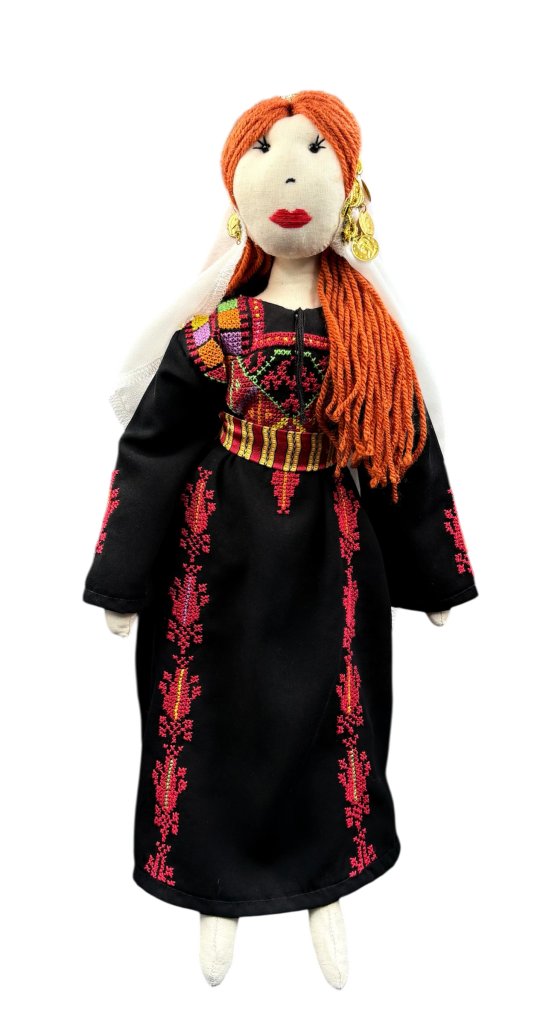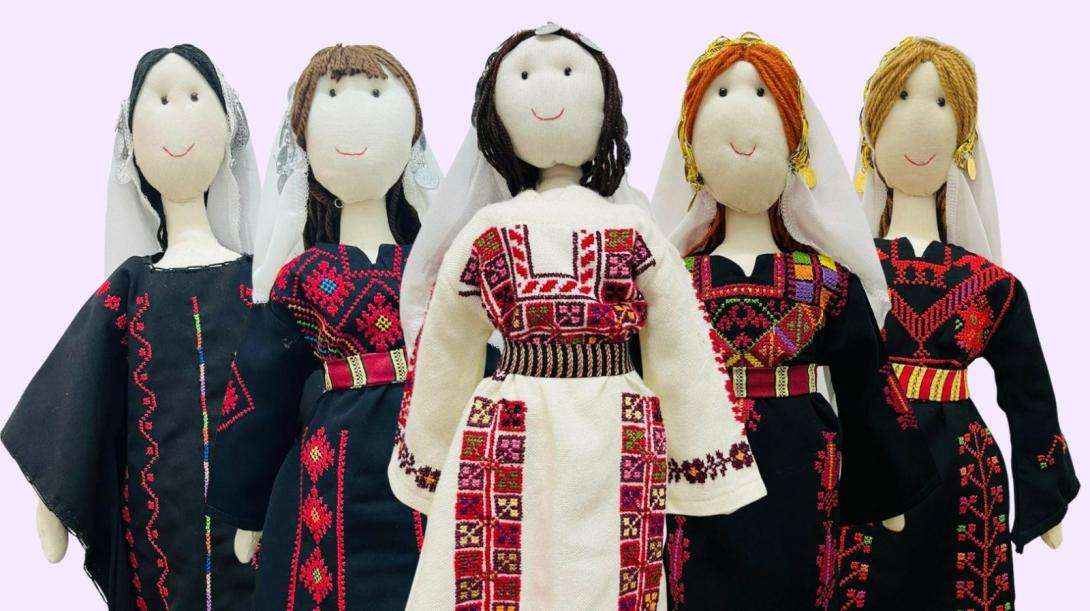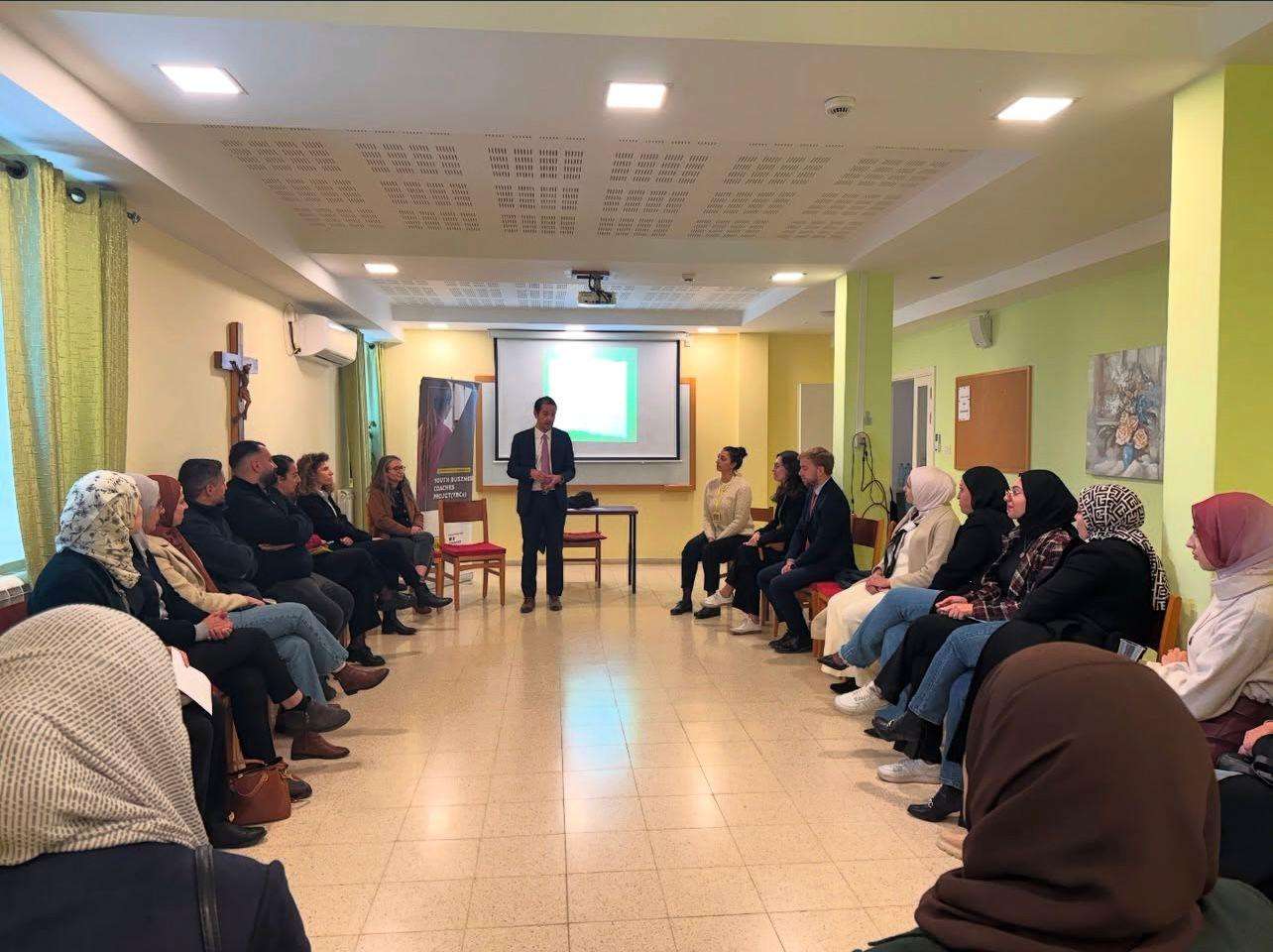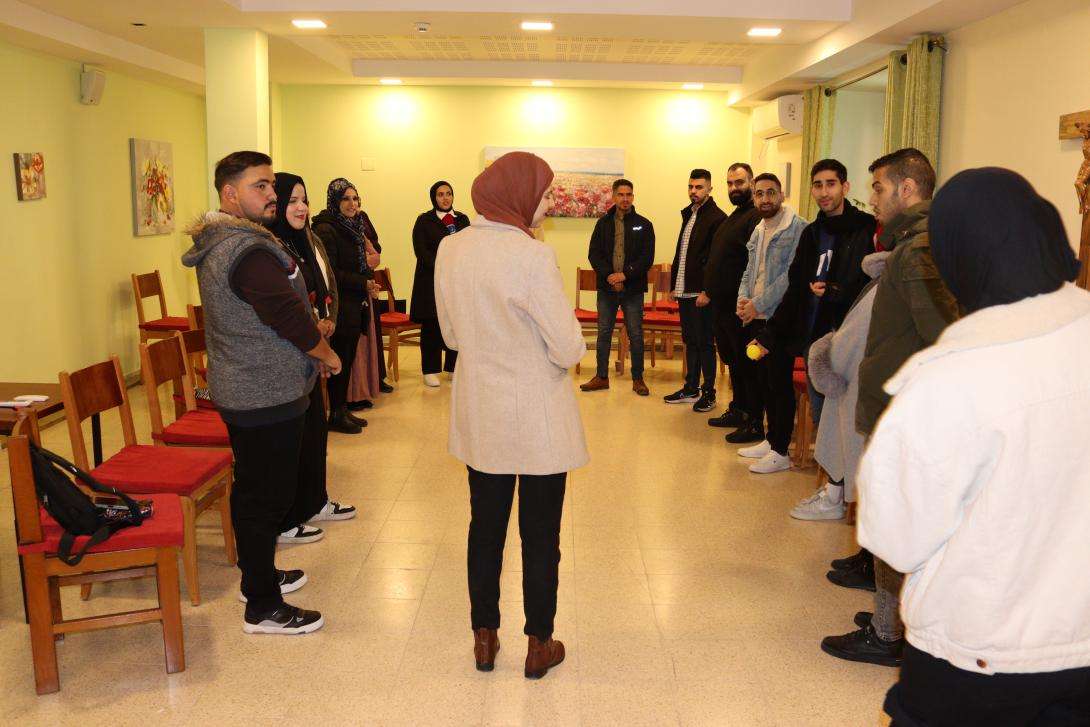

Unforgettable Hebron: A Taste to Remember!
Today, I opened my journal to capture the emotions of my last day in Hebron, the city where I volunteered in a local community organisation. The farewell brings a wave of sadness, leaving behind cherished memories since the day I first set foot in this city. I remember my first meeting with Grandma Hasna when I knocked on her door after searching a lot for signs pointing to “Grandma Hasna’s” place. Turns out, I was going to stay with a real Khalili (from Hebron) family, and it felt just like a real home. The days went by fast, and Grandma Hasna became like family to me, something I didn’t even find back in Canada, my home country. The soul of Hebron resonated through her, and as I turned the pages of my journal, the weight of parting weighed heavily on my heart.
Revisiting the enchanting memories documented in my journal, I traced back to my first day in Hebron’s old city. Starting from my first day in Hebron’s old city, I can still picture the ancient walls, the sounds of sellers walking around, and kids shouting “Hello, Katya.” Grandma Hasna showed me around, taking me to the Ibrahimi Mosque and a spot where people gathered, some with empty plates, some with plates full of hot food. Grandma explained it was Al-Tkeyeh Al-Ibrahimia (The Ibrahimi Hospice), constructed during the Ayyubid era, offering meals, particularly during Ramadan. The day continued with visits to the Palestinian Museum, Maskobiyeh Church, and the markets in the old city. We concluded our exploration at a local restaurant, enjoying Hebron’s traditional food, especially the Khalili Makloubeh. There was even a table for feeding the city’s poor – showing how generous the people of Hebron are, where no one sleeps hungry.
The next day, we explored Hebron’s green spots and old places, like Ein Qashqala, Ein Sara, Ein Wadi Al-Jouz, Tel Al-Ramida, and more. Grandma Hasna told me about the city’s architectural and historical richness spanning the Ayyubid, Mamluk, and Ottoman periods. Each site became a snapshot captured by my camera, preserving Grandma Hasna’s presence in my heart.
A visit to Hebron’s villages was essential, experiencing the rhythm of life as farmers harvested their crops. Grandma Hasna took me southwest to Deir Samet, where we joined relatives for grape-picking. The joyous occasion continued with a visit to an ancient monastery, Deir Samet, where I captured the timeless essence of the old building and stones – what a place!
I read about a museum in one of the village homes, Haj Issac Al-Haroub – Abu Iyad’s house, with ancient belongings for Palestinians collected over 65 years, showing how life used to be. I asked Grandma’s family to guide me to this house, and it was awesome, learning about the Palestinian history. The day concluded with dinner at Grandma Hasna’s family, smelling the delicious Khalili Makloubeh again – a taste I’ll never forget.
Eager to relive this enchanting experience, I’ve decided to share it with my friends. When I get back, I’ll invite them to try Khalili Makloubeh in Hebron and visit Grandma Hasna again.
Did you know that the city of Hebron is one of the areas through which the Palestine Heritage Trail passes? Here, you can wander, enjoy the beauty and diversity of Palestine’s nature, and learn about its history and heritage. For more information about the Palestine Heritage Trail, you can visit the website at https://phtrail.org/.
Hoy, abrí mi diario para capturar las emociones de mi último día en Hebrón, la ciudad donde colaboré con una organización comunitaria local. La despedida trae una ola de tristeza, dejando atrás recuerdos queridos desde el día en que puse un pie por primera vez en esta ciudad. Recuerdo mi primera reunión con la Abuela Hasna cuando llamé a su puerta después de buscar mucho señales que indicaran el lugar de “la Abuela Hasna”. Resulta que iba a quedarme con una verdadera familia Khalili (de Hebrón), y se sintió como un verdadero hogar. Los días pasaron rápido, y la Abuela Hasna se convirtió en una familia para mí, algo que ni siquiera encontré en Canadá, mi país de origen. El alma de Hebrón resonaba a través de ella, y mientras hojeaba las páginas de mi diario, el peso de la despedida pesaba mucho en mi corazón.
Al revisar los encantadores recuerdos documentados en mi diario, volví al primer día en la antigua ciudad de Hebrón. A partir de mi primer día en la antigua ciudad de Hebrón, todavía puedo imaginar las antiguas murallas, los sonidos de los vendedores paseando y los niños gritando “Hola, Katya”. La Abuela Hasna me mostró los alrededores, llevándome a la Mezquita de Ibrahimi y a un lugar donde la gente se reunía, algunos con platos vacíos, otros con platos llenos de comida caliente. La abuela explicó que era Al-Tkeyeh Al-Ibrahimia (El Hospicio de Ibrahimi), construido durante la era Ayubí, que ofrecía comidas, especialmente durante el Ramadán. El día continuó con visitas al Museo Palestino, la Iglesia Maskobiyeh y los mercados en la antigua ciudad. Concluimos nuestra exploración en un restaurante local, disfrutando de la comida tradicional de Hebrón, especialmente el Makloubeh Khalili. Incluso había una mesa para alimentar a los pobres de la ciudad, mostrando la generosidad de la gente de Hebrón, donde nadie pasa hambre.
Al día siguiente, exploramos los espacios verdes y lugares antiguos de Hebrón, como Ein Qashqala, Ein Sara, Ein Wadi Al-Jouz, Tel Al-Ramida y más. La Abuela Hasna me habló sobre la riqueza arquitectónica e histórica de la ciudad que abarca los períodos Ayubí, Mameluco y Otomano. Cada sitio se convirtió en una instantánea capturada por mi cámara, preservando la presencia de la Abuela Hasna en mi corazón.
Una visita a los pueblos de Hebrón era esencial, experimentando el ritmo de vida mientras los agricultores cosechaban sus cultivos. La Abuela Hasna me llevó al suroeste hasta Deir Samet, donde nos unimos a parientes para la recolección de uvas. La ocasión alegre continuó con una visita a un antiguo monasterio, Deir Samet, donde capturé la esencia eterna del antiguo edificio y las piedras. ¡Qué lugar!
Leí sobre un museo en una de las casas del pueblo, la casa de Haj Issac Al-Haroub – Abu Iyad, con pertenencias antiguas para los palestinos recopiladas durante más de 65 años, mostrando cómo solía ser la vida. Le pedí a la familia de la Abuela que me guiara hasta esta casa, y fue increíble, aprendiendo sobre la historia palestina. El día concluyó con una cena en la familia de la Abuela Hasna, oliendo de nuevo el delicioso Makloubeh Khalili, un sabor que nunca olvidaré.
Deseando revivir esta experiencia encantadora, he decidido compartirla con mis amigos. Cuando regrese, los invitaré a probar el Makloubeh Khalili en Hebrón y visitar de nuevo a la Abuela Hasna.
¿Sabías que la ciudad de Hebrón es una de las áreas por las que pasa el Sendero del Patrimonio de Palestina? Aquí, puedes deambular, disfrutar de la belleza y diversidad de la naturaleza de Palestina, y aprender sobre su historia y patrimonio. Para obtener más información sobre el Sendero del Patrimonio de Palestina, puedes visitar el sitio web en https://phtrail.org/.
References
Sources and references:
- Hebron, Palestinian News & Info Agency – WAFA.
- Prominent Historical and Tourist Sites in Hebron, Palestinian News & Info Agency – WAFA.






